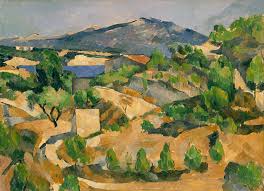The first amazing thing was that the size of the drawings in silver was a shock to us, despite having seen the images digitally when Koo Schadler and I were curating the show. Silverpoint is a slow, labour-intensive medium, where you make marks in silver on a prepared surface that has a sufficiently fine tooth on it to pull particles of silver off the stylus to make the drawing. You don't erase because the marks are metal. You don't get punchy darks because silver does not make dark marks. If you want to make a passage darker, you have to wait until it oxidises, and you can then return to put in another layer of silver... but only for so many times. So when I went in first to see the exhibition, I could scarcely believe my eyes. Some of the drawings are huge, such as those by Constance McClure. That represents thousands and thousands of hours of work. Astounding and admirable.
Conversely, some equally amazing drawings were smaller in real life than they were in the reproductions in the exhibition catalogue! George Sorrels has been doing silverpoint for many, many years and does exquisite small leafy landscapes and dreamscapes, with a luster that is astoundingly beautiful. They are minute.
The other really impressive aspect of this silverpoint exhibition is that this quiet, shimmering medium of silverpoint can speak volumes, powerful volumes. The twenty-eight artists represented, all highly diverse, conveyed a passion, an intensity that were memorable. A breathtakingly spare and elegant big study of lilies by Marjorie Williams-Smith seem to suck the air out of one's lungs, somehow, as you look at it. The lilies are so simple, so powerful. A disarmingly direct gaze of a young girl calls one across the room to a tiny, wondrous portrait of Eliza, done in exquisite detail by Koo Schadler, a silverpoint and egg tempera artist of great stature in this country. The disordered orderliness of four abstract pieces framed together with seeming slashes through them called out powerfully from another corner.
Gerrit Verstraete, of Canada, is a master of the silvery luster of implied surface abrasions and imperfections that somehow become very serene and poetic.
Silverpoint is a medium with fairly narrow technical parameters - you need a prepared surface on which to draw, you need a metal stylus to make the marks, you cannot erase and you know that all the metals, bar gold and platinum, will oxidise in due course. But the artists involved in The Luster of Silver are remarkable in their ability to push the boundaries of silverpoint to make it a thoroughly 21st century medium, addressing a wide variety of concerns. Their silvery voices, pulsating with light, are well worth seeking out if you are in or near Evansville, Indiana, from now until September 13th this year.












